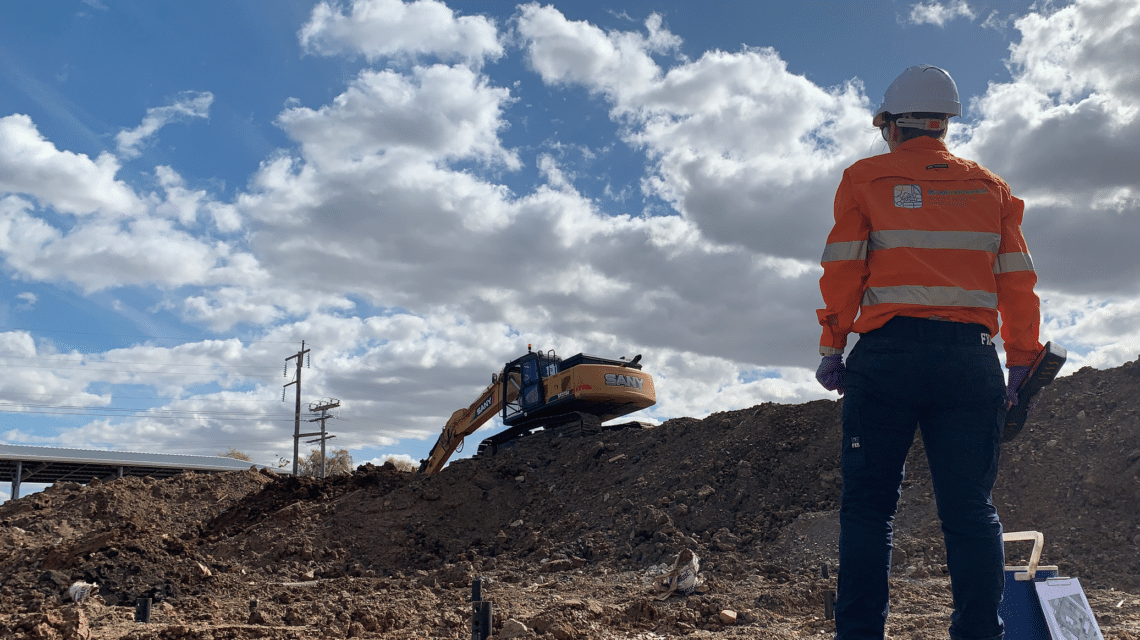Understanding site contamination in environmental management necessitates a comprehensive strategy. Unlock the secrets to battling site contamination with Conceptual Site Models (CSMs)—your ultimate guide in the environmental management toolkit! This revised introduction combines an NLP-friendly opening with an engaging hook designed to captivate YouTube viewers, encouraging them to pause their current viewing and delve into the topic of CSMs. By offering a visual and analytical framework, CSMs play a crucial role in deciphering the complex dynamics of contamination at any given site. This blog post not only demystifies CSMs but also emphasizes their critical role in identifying, evaluating, and addressing contaminated sites, aiming to arm environmental experts, stakeholders, and the curious reader with the necessary tools to tackle the challenges of site contamination head-on.
What is a Conceptual Site Model (CSM)?
A Conceptual Site Model (CSM) is an essential tool in environmental consulting, particularly in the field of land and groundwater contamination. It provides a simplified representation of the environmental conditions at a site, identifying the types and sources of contamination, potential receptors, and pathways through which the contamination can affect human health and the environment. iEnvironmental Australia Pty Ltd, as a leader in environmental consulting in Australia, heavily relies on CSMs to assess and manage contaminated sites effectively.
How to Develop a Conceptual Site Model (CSM)
Developing a CSM involves collecting and evaluating various data types, including historical land use records, geologic and hydrogeologic information, and environmental sampling data. Identifying data gaps is crucial at this stage, as they can significantly impact the model’s accuracy. The process involves:
- Site History Review: Investigating the historical use of the site to identify potential sources of contamination. This includes reviewing past industrial activities, waste disposal practices, and land-use changes.
- Geological and Hydrogeological Assessment: Understanding the geological and hydrogeological characteristics of the site is critical. This involves analyzing soil types, groundwater flow, and other relevant environmental features that can influence the spread of contamination.
- Environmental Sampling and Analysis: Conducting thorough environmental sampling of soil, water, and air. This helps in determining the types and concentrations of contaminants present at the site.
- Identification of Potential Human and Ecological Receptors: Assessing who or what could be adversely affected by the contamination. This includes local communities, wildlife, and nearby ecosystems.
- Data Integration and Interpretation: Integrating all gathered data to create a coherent picture of the site conditions. This step involves identifying data gaps and inconsistencies.
- Model Refinement: Continuously updating the CSM as new data becomes available or as site conditions change. This iterative process ensures the model remains accurate and relevant.
- Stakeholder Engagement: Involving stakeholders, including local communities, regulatory bodies, and clients, in the development of the CSM to ensure all perspectives and concerns are considered.
Benefits of Using Conceptual Site Models (CSMs)
Conceptual Site Models offer a range of benefits that make them indispensable in environmental consulting:
Improved Decision Making: CSMs provide a clear framework for decision-making processes, particularly in complex contamination scenarios.
- Resource Optimization: By clearly defining the contaminated areas and pathways, CSMs help in optimizing the use of resources for remediation and management.
- Enhanced Communication: They serve as an effective communication tool between different stakeholders, including regulatory authorities, clients, and the public.
- Regulatory Compliance: CSMs help in ensuring compliance with environmental regulations by providing a thorough understanding of the site’s contamination issues.
- Risk Management: They play a crucial role in assessing and managing the risks associated with contaminated sites, especially in terms of human health and the environment.
- Facilitating Remediation: By identifying the most impacted areas and the nature of contamination, CSMs guide the development of targeted remediation strategies.
- Long-Term Monitoring and Management: CSMs are useful for setting up long-term monitoring plans to ensure the ongoing effectiveness of remediation measures.
Key Components of a CSM
A comprehensive CSM includes several critical components:
- Sources of Contamination: Identifying the types of contaminants and their origins.
- Pathways: Understanding how contaminants migrate through the environment.
- Receptors: Identifying potential targets, including humans and ecological systems.
- Geological and Hydrogeological Settings: Assessing the soil type, geology, and hydrogeology of the site, which influence contaminant transport and fate.
- Potential Health and Ecological Risks: Evaluating the risks posed by the contamination to human health and the environment, including long-term exposure risks.
- Land Use Considerations: Considering current and future land use in the context of contamination to guide appropriate management strategies.
- Regulatory Framework and Standards: Understanding the applicable environmental protection laws and standards that guide the assessment and remediation of contaminated sites.
Applications of CSMs in Environmental Assessment and Remediation
Conceptual Site Models (CSMs) have diverse applications in environmental assessment and remediation, aiding in the comprehensive management of contaminated sites. Additional applications include:
- Baseline Environmental Assessments: CSMs provide a foundational understanding of pre-existing environmental conditions, crucial for baseline assessments.
- Contaminant Transport Modeling: They are used to model the movement of contaminants through various media such as soil, groundwater, and air.
- Site Zoning for Remediation: CSMs help in zoning contaminated sites based on the level and type of contamination, aiding in focused remediation efforts.
- Long-term Environmental Monitoring: They guide the development of long-term environmental monitoring strategies, ensuring continued protection of human health and the environment.
- Waste Management and Disposal: CSMs inform the strategies for the safe management and disposal of contaminated soil and water.
- Groundwater Protection and Remediation: They are crucial in understanding the dynamics of groundwater contamination and in designing appropriate remediation strategies.
- Ecosystem Restoration: CSMs assist in planning and executing ecosystem restoration projects, especially in areas affected by industrial contamination.
Using CSMs to Develop Effective Remediation Strategies
CSMs are pivotal in developing remediation strategies. They help in identifying the most effective approach to manage and mitigate the risks associated with contaminated land. Additional ways in which they are utilized include:
- Targeted Remediation Approach: CSMs enable a more targeted approach to remediation by identifying specific areas and types of contamination.
- Cost-Effective Solutions: They help in devising cost-effective remediation strategies by prioritizing areas that require urgent attention.
- Technological Integration: CSMs guide the selection of the most appropriate remediation technologies based on site-specific conditions.
- Stakeholder Engagement: They facilitate better engagement with stakeholders by providing a clear understanding of the remediation process and expected outcomes.
- Adaptive Management: CSMs allow for adaptive management of remediation processes, accommodating changes as new information emerges.
- Sustainable Practices: They encourage the adoption of sustainable and environmentally friendly remediation practices.
- Compliance and Reporting: CSMs aid in ensuring compliance with environmental regulations and in the preparation of detailed reports for regulatory bodies.
By understanding the site-specific conditions and contamination dynamics, remediation efforts can be targeted more effectively, ensuring efficient resource utilization and better outcomes.
The Role of CSMs in Risk Assessment and Management
Risk assessment and management are integral parts of environmental consulting. CSMs play a critical role here by providing a framework to evaluate the risks associated with contaminated sites. This evaluation is crucial for making decisions about land use, remediation needs, and protection measures for human health and the environment. Additional roles include:
-
- Identifying Risk Pathways: CSMs help in identifying the pathways through which contaminants might pose risks to human health and the environment.
- Risk Prioritization: They assist in prioritizing risks, focusing efforts on the most critical areas of concern.
- Informing Health Impact Assessments: CSMs provide crucial data for conducting health impact assessments related to contaminated sites.
- Regulatory Liaison: They serve as a tool for communication with regulatory authorities, aiding in the demonstration of compliance and risk management.
- Community Engagement: CSMs are useful in engaging with local communities, providing transparent information about risks and mitigation measures.
- Emergency Response Planning: They play a role in planning for emergency responses in case of accidental releases or exposure events.
- Insurance and Liability Assessment: CSMs are also used in assessing insurance requirements and potential liabilities related to contaminated sites.
At iEnvironmental Australia, our commitment to excellence in environmental consulting is underscored by our use of CSMs. We believe in providing innovative, cost-effective solutions while ensuring the highest standards of integrity and environmental protection. Our experienced team is equipped to handle the complexities of contaminated sites, offering tailored solutions that meet our clients’ unique needs.
For more information on how we can assist you with your environmental consulting needs, or to request a quotation, please visit our website or contact us directly. We look forward to helping you manage your environmental challenges effectively.


 Improved Decision Making: CSMs provide a clear framework for decision-making processes, particularly in complex contamination scenarios.
Improved Decision Making: CSMs provide a clear framework for decision-making processes, particularly in complex contamination scenarios.